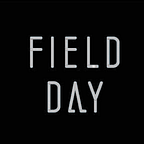Julie Sykes teaches French with post-apocalyptic augmented reality app - EcoPod
University of Oregon, Eugene — Center for Applied Second Language Studies (CASLS)
You’re awakened by a knock at your dorm door. Do you answer it?
If you choose to answer the door, you learn the building is being evacuated. Some kind of emergency on campus. Maybe you run out the door right then, maybe you grab some things. Or maybe you simply go back to sleep.
Soon, you learn a deadly flu has hit campus. You have to do more than survive. Each choice you make propels you along a path, some paths leading to longer lives than others….
Inspired by the book Station 11, this year’s Common Reading selected book at the University of Oregon, EcoPod is mobile game for students in the “Living the Language” residential immersion program.
We stopped in at the CASLS office on the U of O campus in Eugene to chat with Ben Pearson and Carl Burnstein, part of Julie Sykes’ EcoPod design team, to see how they used our tool ARIS to make this post-apocalyptic educational game.
EcoPod Game Play
The game begins at the Global Scholars Hall with a digital scavenger hunt. Playing in groups, students collect virtual matches, first aid kits, water, knives — all things they may need to save themselves from the Georgia Flu. They continue the game as they tour the U of O campus and make choices — do you stay with your friends or head out on your own? do you carry a gun or a guitar? do you share your resources? These choices resonate with a theme in Station 11: “Survival is insufficient.” By the end of class that day, students have either lived or died in the pandemic. Choices that would enrich community are more likely to lead to survival.
The next week, the students replay the game in their target language of Spanish, Chinese, French, German, or Japanese. As they play in small groups, they are encouraged to discuss their choices in that language. They’re asked how those choices and scenarios may differ in another culture. What would this flu pandemic look like in China? In Germany? How would people react differently there than in Eugene, OR?
For the final track of the game, students will rewrite the narrative to be culturally specific, instead of simply a direct translation.
Designing for Interaction
This “choose your own adventure” style game relied on good storytelling techniques to keep it interactive and thought provoking. With each iteration of the game, the designers looked for more ways for the students’ choices to matter.
When Ben Pearsons joined the CASLS team, his role was to make the game more engaging. “I didn’t want the players to feel like they were on a linear path,” he said. “At first, they just clicked ‘continue’ four times in a row. We threw in more choices to branch out the story.”
Carl displayed the dozen posters that illustrated the possible pathways each player could take. “It’s important to put the time in to revise and make your game as interactive as possible. Make it immersive.”
Haptic feedback and sound effects (like tromping through a forest, a child’s cry, a zipper closing a bag) helped immerse the students in this augmented reality, too.
In addition to creating more choices for the players, Ben also made sure the items (assets) students picked up along the way affected the gameplay. “I made sure we reminded them of something like, ‘good thing you picked up a knife back there because a cougar just jumped out at you!’ Or, ‘it’s a good thing you have water to wash those berries you just found.’ We had to keep all these items integrated in the storyline. Interactions in the game would change depending on what items students had with them.”
“When I was walking with my group of students, they were making choices like they were in the Walking Dead,” Ben said. “’No, we have to survive!’ the students would say. ‘We can’t help them out!’ But if they read Station 11, they would have chosen survival with people, not just going off by themselves.”
In fact, one of Carl’s favorite moments in the game is a pivotal moment when the player is given the choice to shoot a stranger or to put down the gun. “At that moment you think, am I a nice person?” Carl said. “Or do I not trust people?”
Challenges
One of the biggest challenges the team faced was internet connectivity on campus. Because the offline mode didn’t work consistently, they brought iPads equipped with mobile data and recommended the students with an iOS device turn off their WiFi. It also helped for students to pre-load the assets (images, video, and sounds) before playing the game.
“Don’t get discouraged when you’re making a game,” Ben advises. “Games are a new medium. There is skepticism as people wonder what their purpose is for students. Know your specific objectives, build them into your game. The game is a useful tool if you scaffold it. Your game can be complex, but it can also be something much simpler that is still interesting.”
“Seeing how excited the students were to play the game made the last three months of creating it worth it,” Carl said. “They were talking together, making decisions, having fun!”
We can’t wait to see how the students build the next level of the game as they master both their new languages and ARIS!
